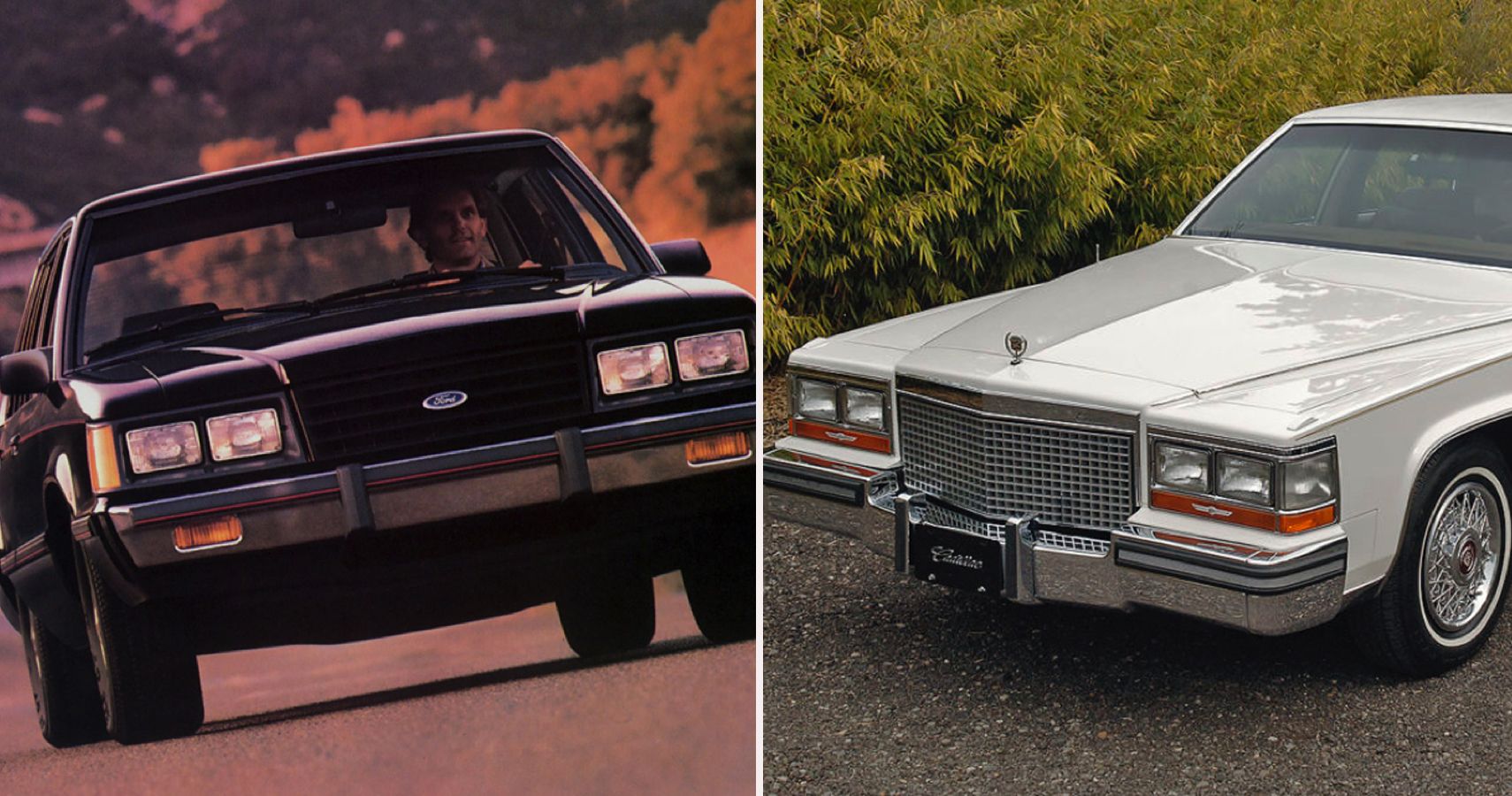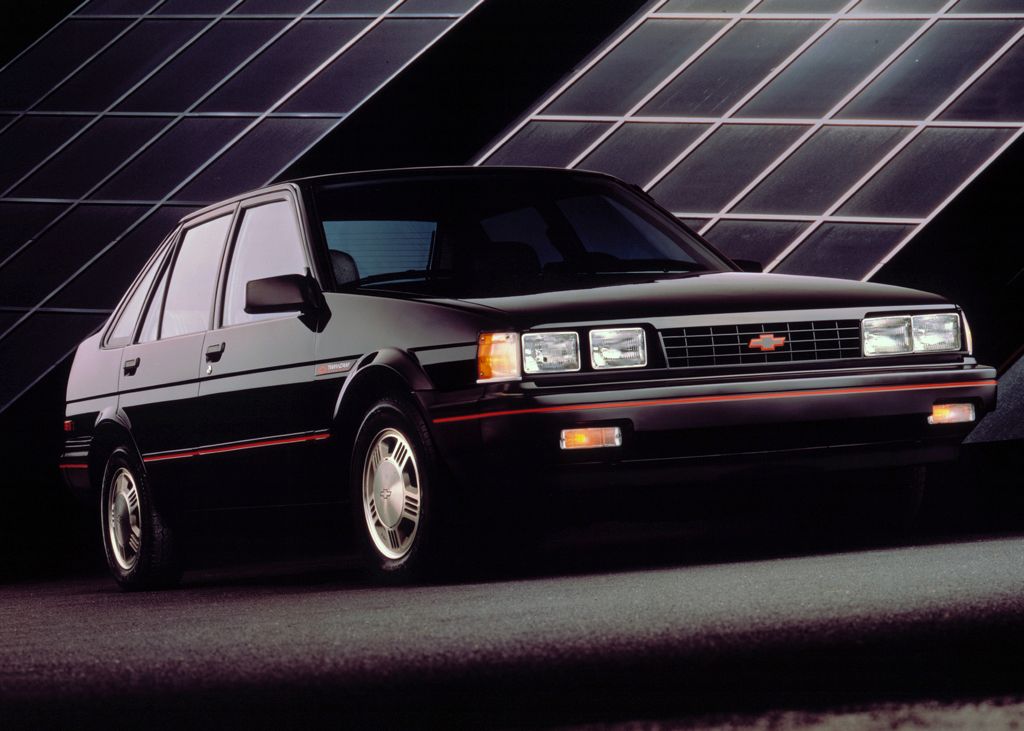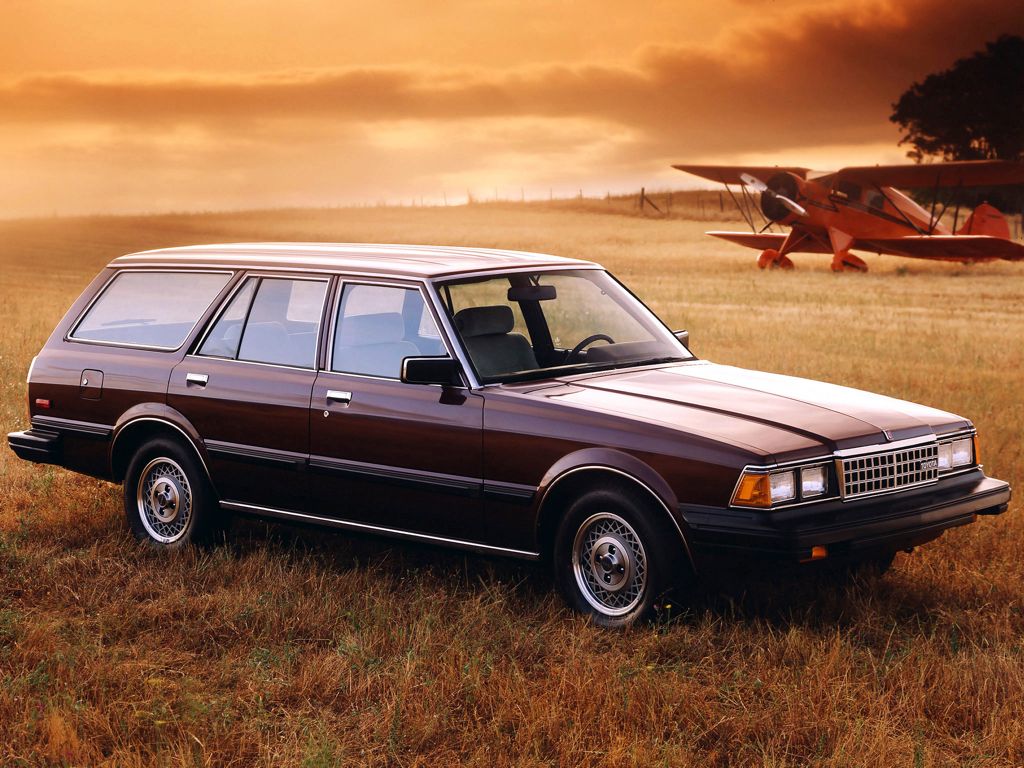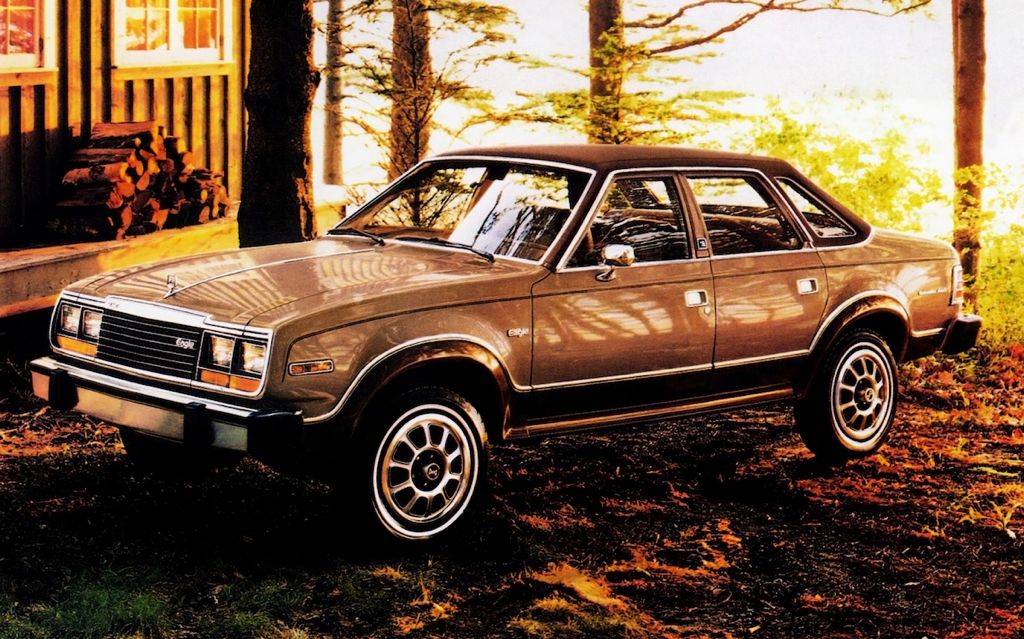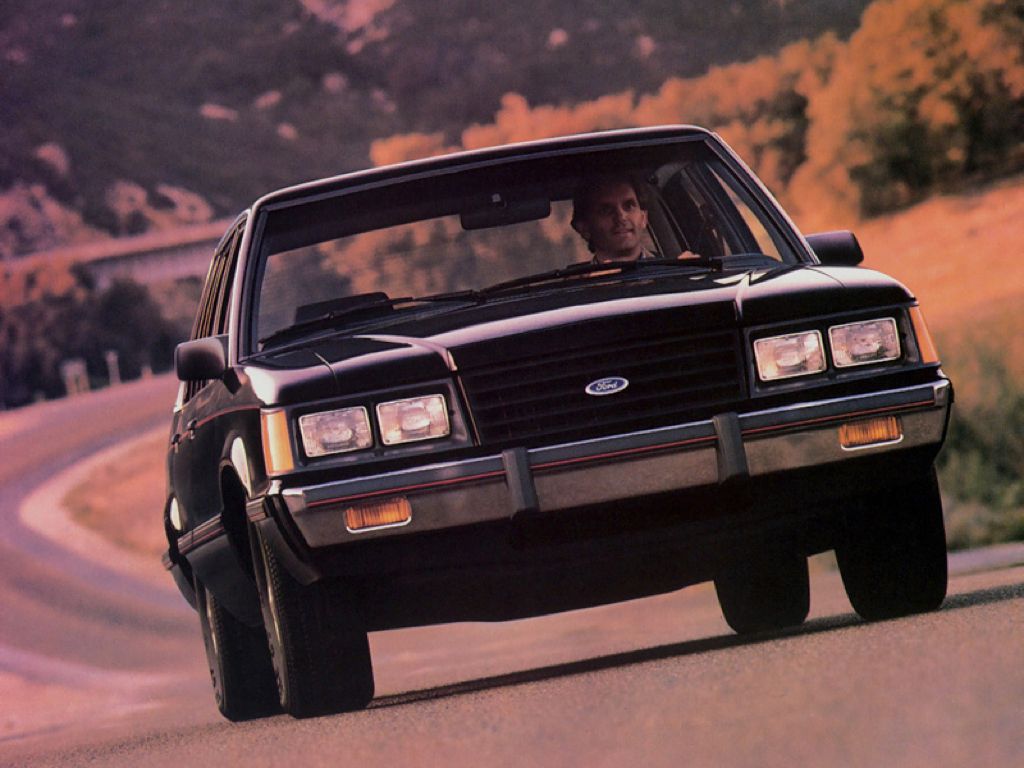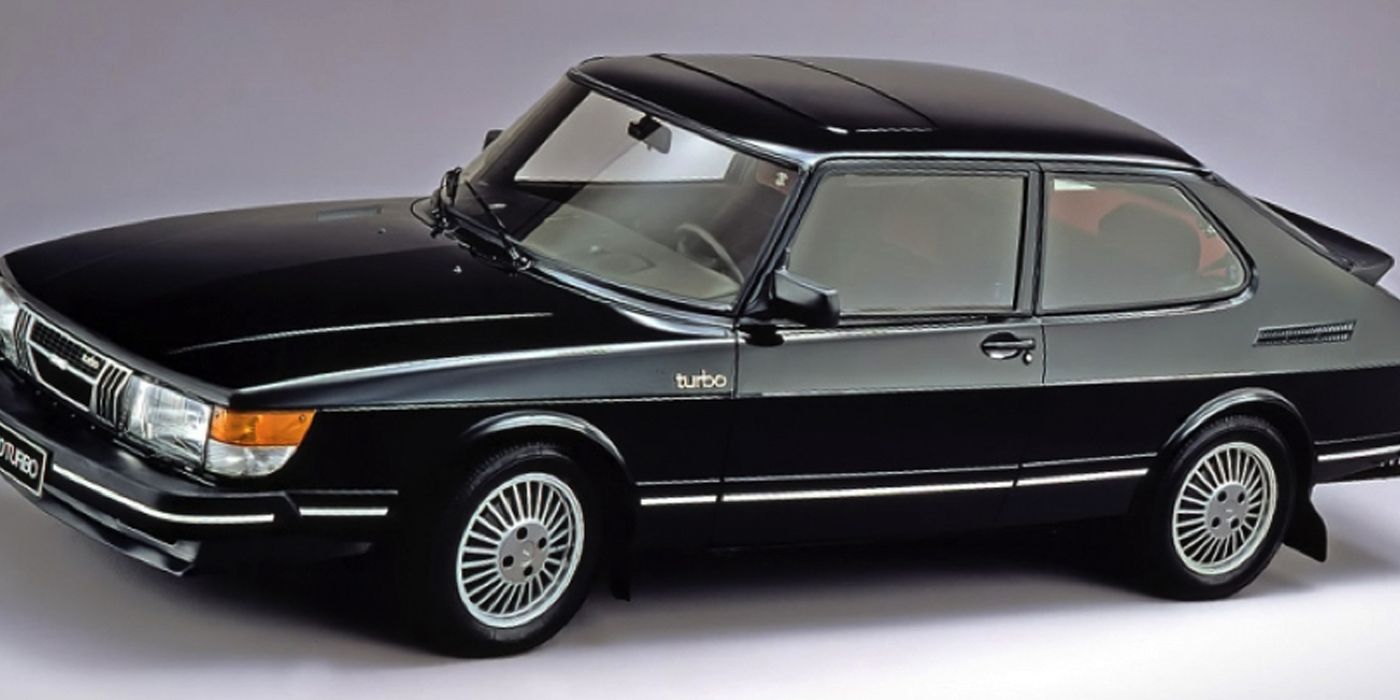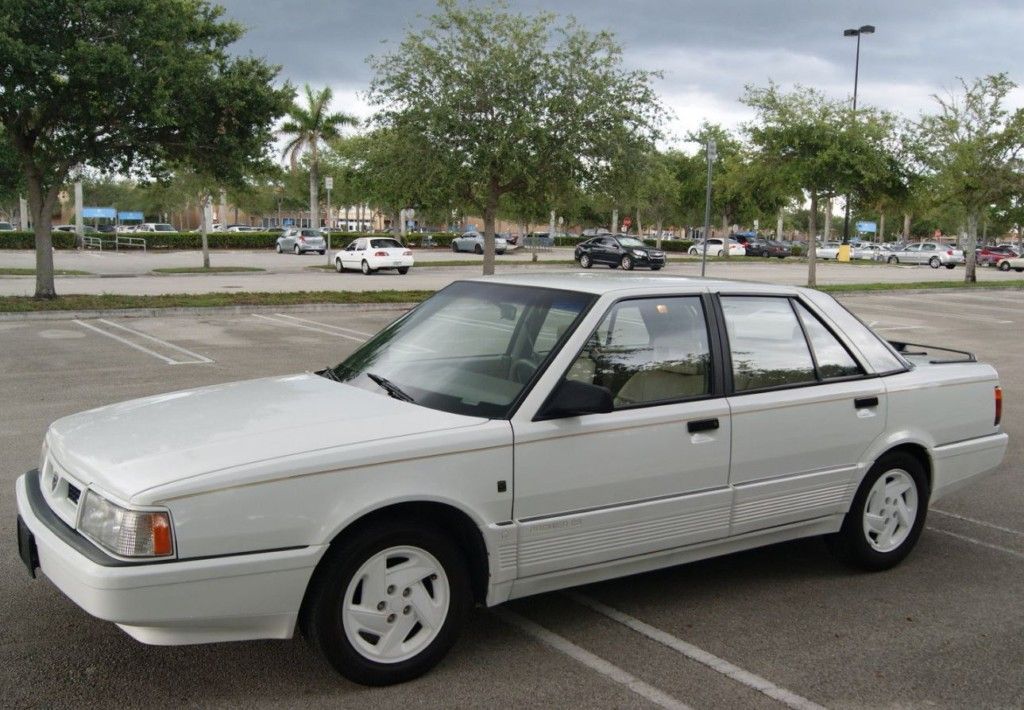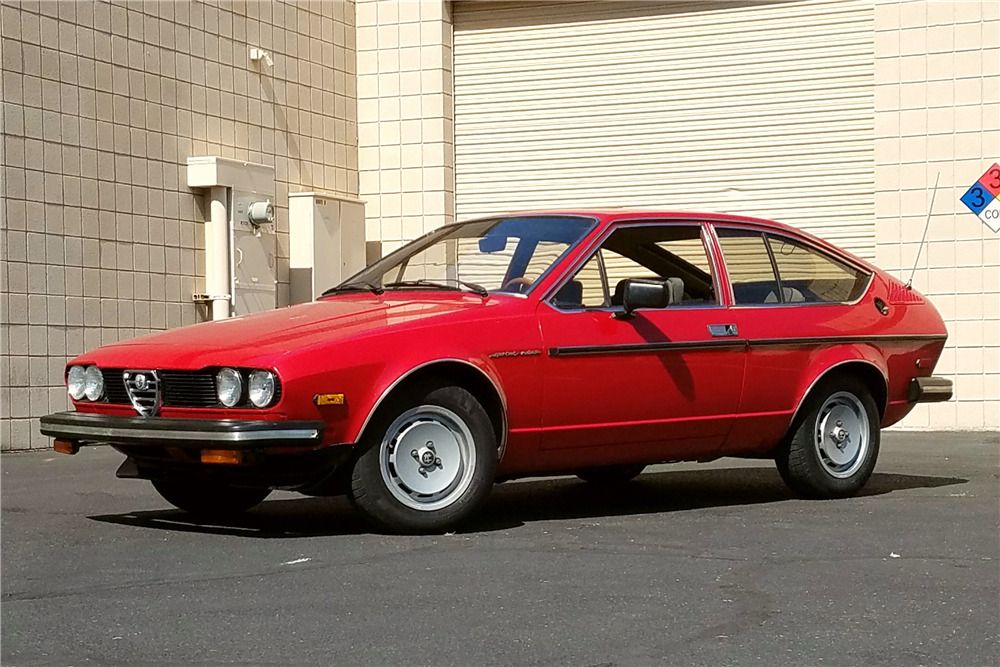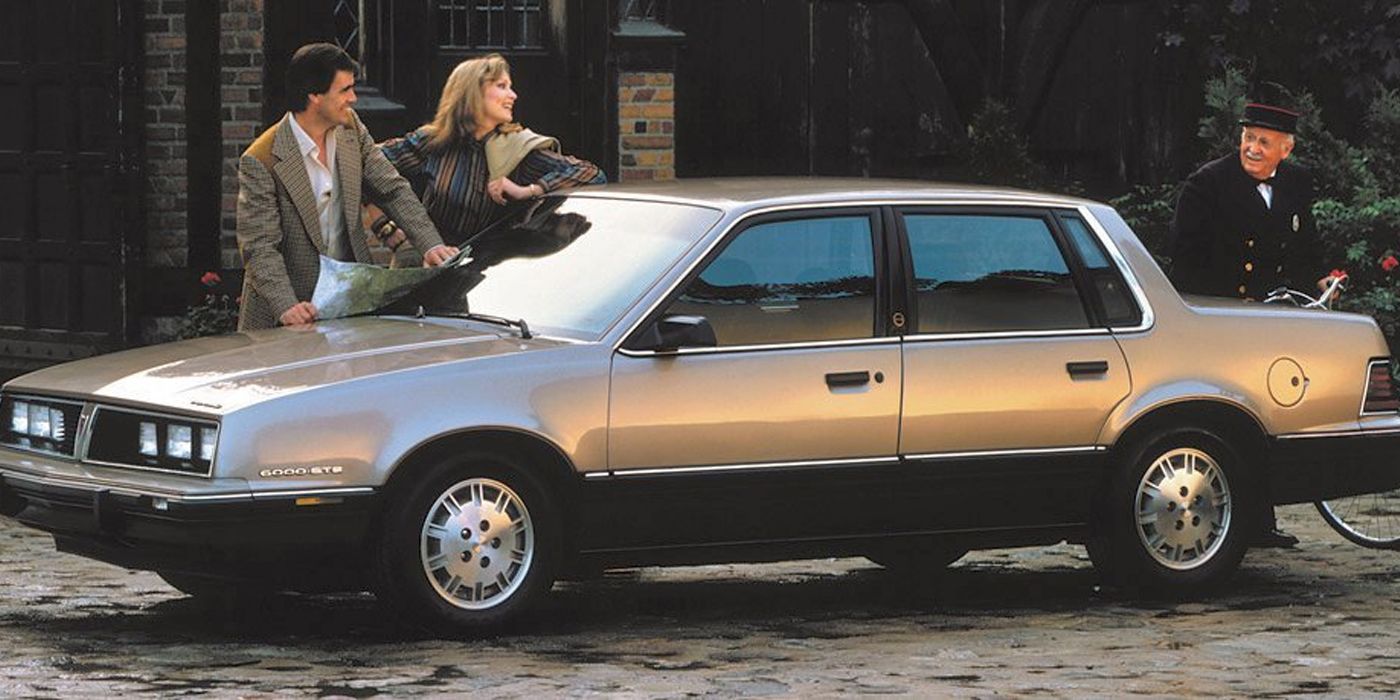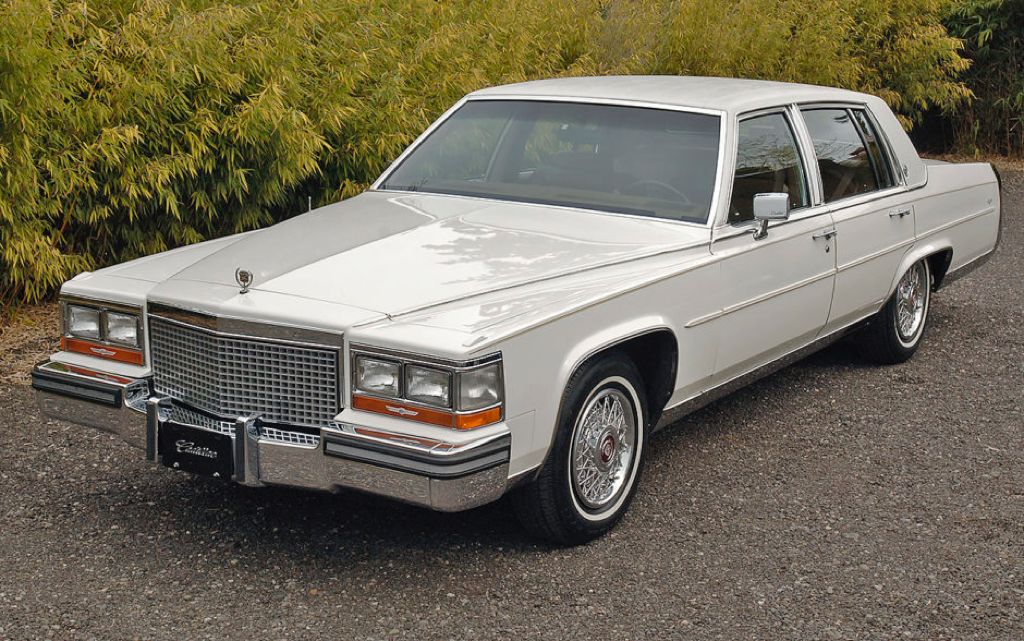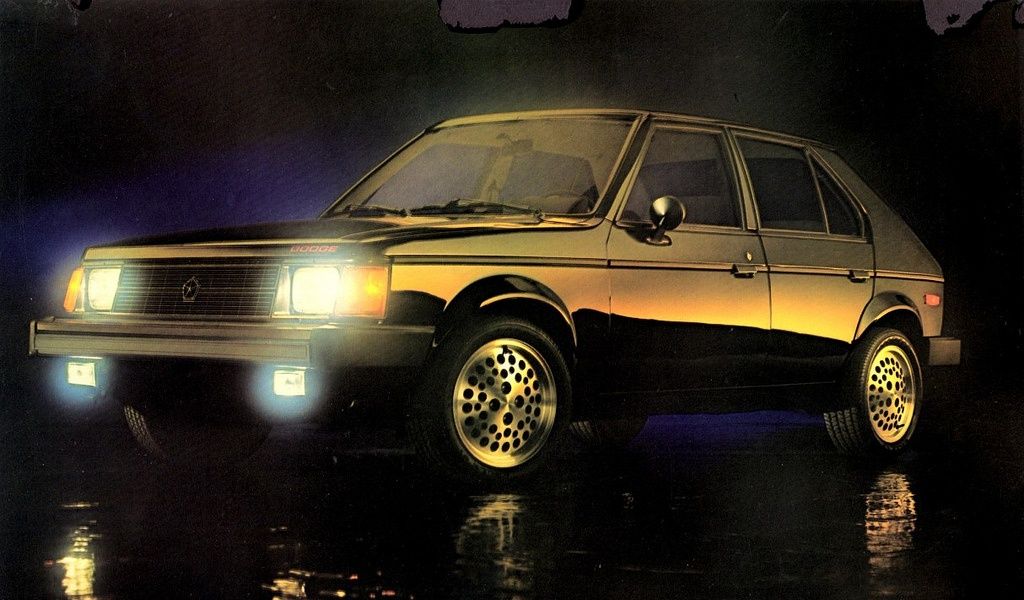Car fans could be forgiven for thinking the 1980s was a lost decade. The “malaise” era had a stranglehold on the industry, red-striped bodyside moldings represented “sport,” and the fastest car General Motors built was briefly a Buick Regal (a Grand National, but still).
However, wade a little deeper into that pile of parachute pants and hot-pink leg warmers and the observant car enthusiast will find evidence that automakers were beginning to slough off their torpor quite a bit earlier than the end of the decade.
10 1988 Chevrolet Nova Twin-Cam
GM’s NUMMI joint venture with Toyota produced this high-performance variant of the Corolla-based Nova sedan. It came to market with the 108 horsepower, fuel-injected 1.6-liter 16-valve engine from the Corolla FX, four-wheel disc brakes, and … virtually no visual excitement whatsoever. It was only available in black with grey cloth interior and a set of demure alloy wheels.
The result was the ultimate stealth hot rod: a car that could surprise a lot of GTI-class hatches at stoplights, in a package that its owner could easily lose in a Kmart parking lot. Only a few thousand Twin-Cams were produced before the Geo Prizm replaced the Nova in ’89.
9 Toyota Cressida
Before Toyota blew up the global luxury car market with the arrival of its Lexus division, the Cressida represented the high end of its offerings in the U.S. Called the Corona Mark II in its home market, the Cressida came to these shores as a rear-drive four-door sedan or wagon with rich velour upholstery and the fuel-injected straight-6 engine from the Supra sports coupe. In addition, the 1981 Cressida was the first with motorized shoulder belts designed to meet coming U.S. safety standards.
Eventually, Toyota executives decided the Cressida was too close in concept to the sedans that would carry the Lexus badge, so it left the U.S. in 1992, to be replaced by the Camry-derived Avalon. Whatever the charms of the Avalon, it’s not the same as a luxury sedan with the heart of a sports car.
8 AMC Eagle
In a way, it’s a surprise that the owner of the Jeep brand took so long to put a four-wheel-drive system under a passenger car. But plucky little American Motors finally figured it out for the 1980 model year, and the result turned the Concord into Outback 1.0. Full-time all-wheel-drive made the Eagle unstoppable in rough weather, and is widely regarded as the first true “crossover” vehicle.
The Eagle was so popular, it actually outlasted AMC by a few months, as Chrysler wound down production of the segment-busting compact. Now, Chrysler has all the tools to create a new Eagle in the LX platform. Imagine a Charger front end, the wagon back end from the 2000s-era Dodge Magnum, all-wheel-drive, some purposeful body cladding, and a sticker price under about $35,000. They’d fly out the door.
7 Ford LTD LX
Ford’s Fox-body Mustang GT and LX 5.0 are automotive performance icons. The ponycar’s high-output V8 helped power the auto industry out of its funk in the mid-80s. And it also lived under the hood of the closest thing ever to a four-door Mustang: the LTD LX. Ford created it by stuffing the Mustang GT’s drivetrain into its Fox-platform-mate LTD sedan and throwing in red accents, blackout trim and the alloy wheels from the Thunderbird Turbo Coupe.
This made for a quick, smart-handling car that was in essence the most capable Fairmont ever built. Ford sold very few before axing the LTD in favor of the groundbreaking Taurus sedan. Ford may be getting out of the sedan business in the U.S., but if the pendulum swings back, it wouldn’t take much to turn the 2020 Explorer platform into a sedan … maybe with that twin-turbo Ecoboost V6?
6 Saab 900 Turbo
The Saab 900 was introduced in 1979 as a slightly larger variant of the Swedish company’s groundbreaking 99 sedan. To its quirky safety-minded design features (fishbowl windshield, console-mounted ignition switch) the 900 added a spirited turbocharged engine that gave the practical hatchback a wild side. Future variants would include beefier turbos and more visual swag than one would find in an IKEA catalog.
The “Classic” 900 disappeared in the early 90s, and Saab soldiered on as a division of GM until it gasped its last in 2011. Various efforts to take over or revive the brand fell apart, To this day Saab has gone back to its aircraft roots and reportedly has no plans to re-enter the car business.
5 Eagle Premier
Derived from the Renault 25 while the French company owned AMC, plans to bring the largest Eagle out as the “Renault Premier” were cancelled with the sale to Chrysler. With that, the Pentastar gang inherited a modern mid-sized sedan with styling by Giugiaro’s ItalDesign, a fully-independent suspension, and a high-tech, driver-focused interior.
However, because it was so unlike any other car from Chrysler, dealers were confused by it, and marketing dollars were spread too thin. After briefly selling a badge-engineered version as the Dodge Monaco, Chrysler killed off the Premier in 1992. But its up-to-date platform became the basis for the popular “cab-forward” LH-platform cars that replaced it.
4 Alfa Romeo GTV
If BMW can market a four-door version of the 6-series as a “Gran Coupe,” then this spirited two-door belongs on a list of great sedans. The Alfetta-based GTV came to market with a drivetrain layout designed to maximize handling prowess, and a series of sweet four- and six-cylinder engines, all cloaked in crisp ItalDesign bodywork.
Of course, because the GTV was an Alfa Romeo, owners loved it … even though they mostly drove it between repair shops and their garages. A few years after the GTV left the market, Fiat took over Alfa Romeo, and the brand is poised for a renaissance on the success of the Giulia sedan and Stelvio SUV. Fiat Chrysler has been promising a new Giulia-based GTV, but it remains to be seen whether the 21st-Century edition has the charm of the 80s throwback.
3 Pontiac 6000STE
Pontiac’s engineers took the best bits from the midsize “A” platform and created the 6000 Special Touring Edition in 1983. The corporate 2.8-liter V6 provided decent performance, while the sport-tuned suspension let the nose-heavy, front-drive family sedan (mostly) hang with more expensive imports. And its funky six-lamp front end and squared-off profile made it one of the most handsome cars of the era.
Sadly, Pontiac has been dead since 2008, after its brief as the “excitement division” got diluted by flabby Parisiennes and rental-car-spec Grands Am. The closest thing to the 6000STE’s formula in GM’s stable now might be Buick’s Regal GS, IF they showed it off in two-tone brown with a dose of Grand National-style blackout.
2 Cadillac Sedan de Ville/Brougham
The American car industry is moving toward an all-crossover future, full of vehicles that handle relatively well and feature European-inspired interiors with contoured leather seats. That’s all fine, but is there no room for the classic American sedan? One that offers its passengers cushy velour seats that stretch from one door to the other and a quiet and pillow-soft ride?
If there is, the ideal American land yacht is the full-sized Cadillac sedan that rolled out in 1980 The Standard Of The World provided comfortable space for six grownups, wrapped in a stately and elegant shape that still has presence today. Throw a Camaro’s V8 engine under the hood and head for the opera.
1 Dodge Omni GLH
It’s the classic American hot-rod philosophy: drop a powerful engine into a small car and stand the heck back. So it was in 1984 when Chrysler consultant and sports-car savant Carroll Shelby slid a 2.2-liter high-output four-cylinder engine under the hood of the little Dodge Omni hatchback, threw some fat tires and black spoilers on it, and called it the GLH (literally, “Goes Like Hell”). Later, Dodge turbocharged the 2.2, which turned the econobox into a tire-shredding rocket ship.
It was a little crude, and parts of it were barely changed from its economy-car roots, but it had a great scrappy charm. Chrysler dropped the GLH in 1987, and it’s doubtful FCA would want to get back into the compact car business, since its last effort (the Dart) was such a flop, But if the ghost of Carroll Shelby visits the place, the Tipo hatch is just waiting for a heart transplant.

